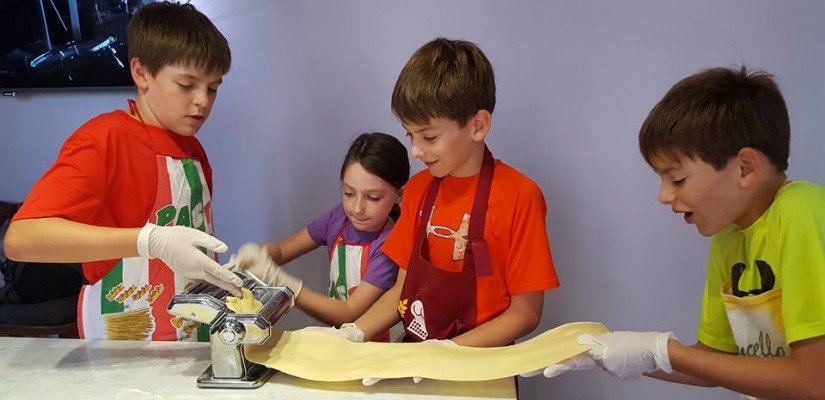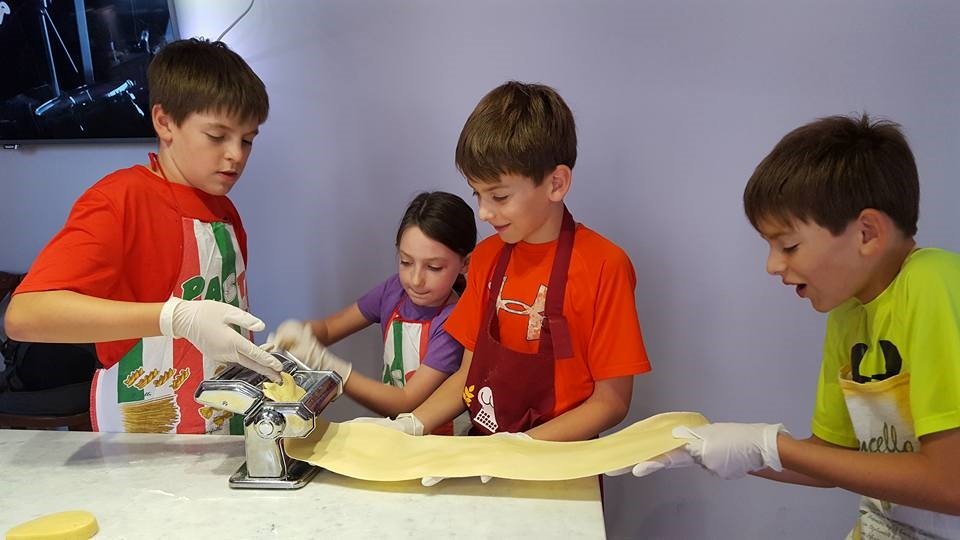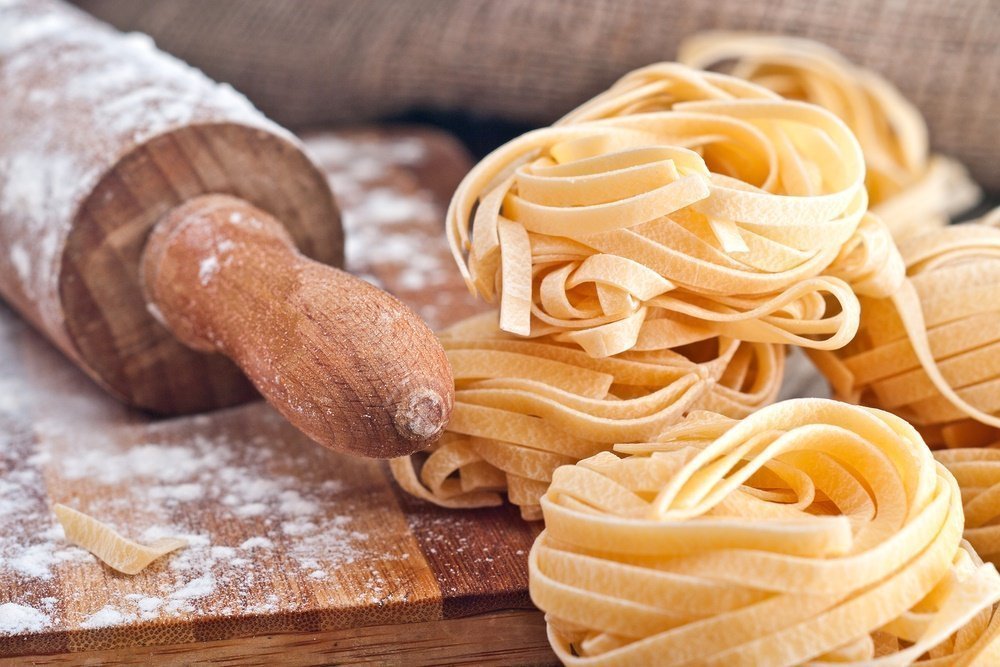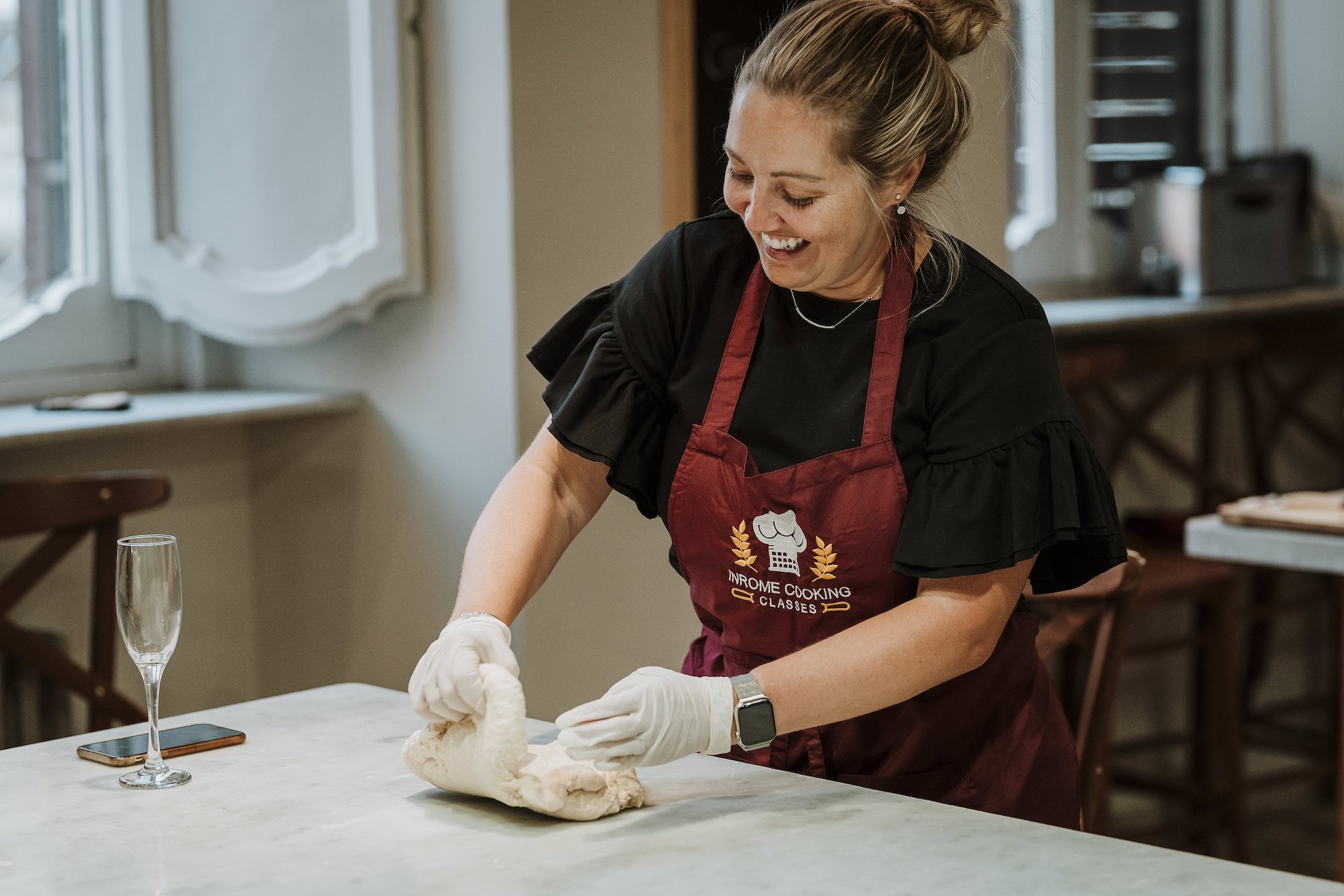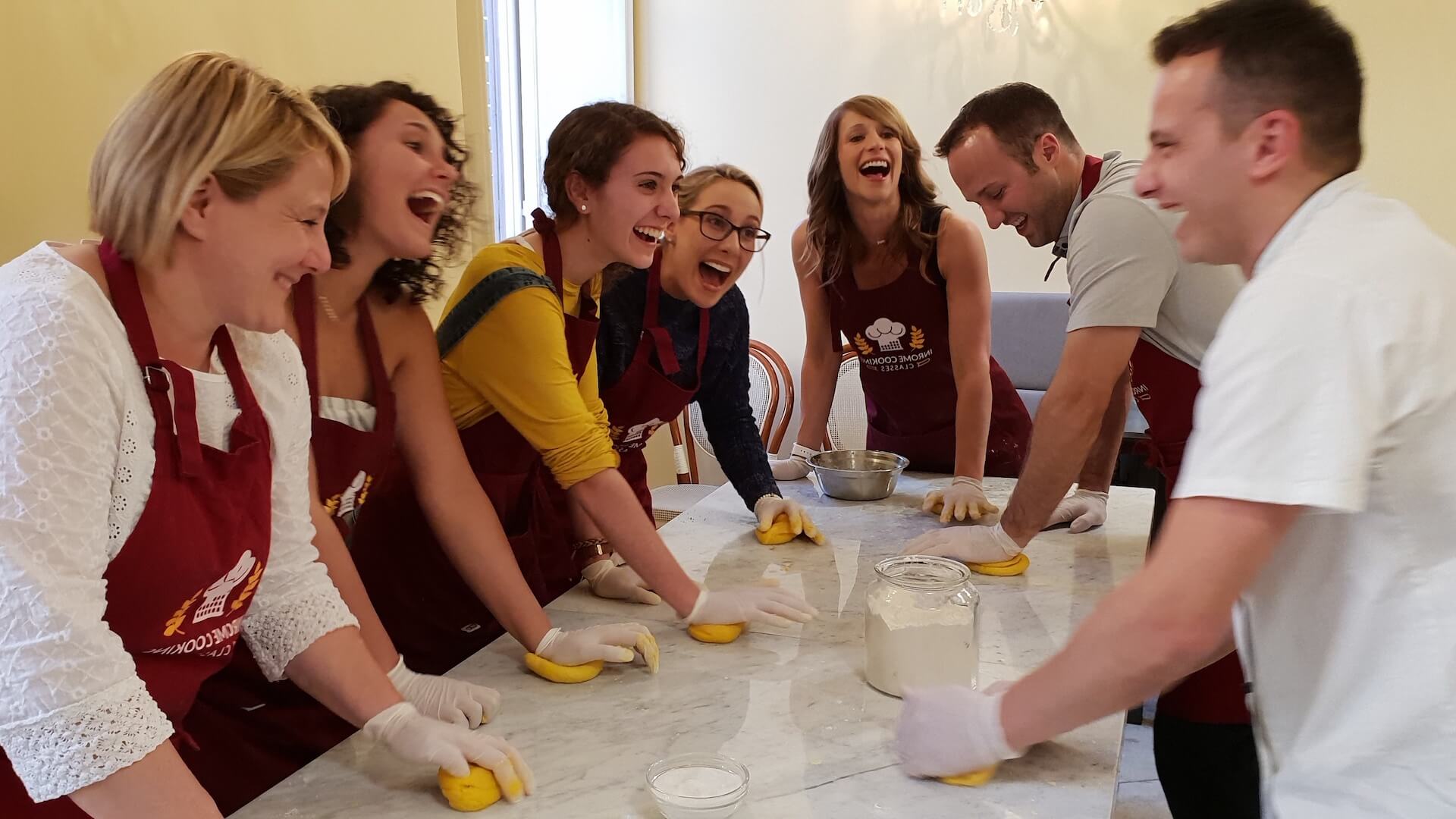At Rome Cooking, our cooks often ask us whether fresh pasta is superior to dried pasta. It is a common misconception that fresh pasta is ‘better’ than dried pasta but the truth is they have different functions.
A plate of dried pasta from Gragnano, using durum wheat and shaped with bronze, cooked to perfect-al dente-perfection, beats a plate of fresh pasta made without love or good flour any day.
(Tip: when looking for a good dried pasta have a look at the texture- it should have a sort of dust on the pasta, which is a sign of quality and helps sauce cling to the pasta when cooked.)
Geography can help decide when it is better to use fresh pasta or dried pasta. Fresh pasta rich with egg yolks traditionally comes from the north of Italy, Emilia-Romagna, and thus is perfectly suited to be matched with Ragù alla Bolognese.
Dried pasta originated in the south of Italy and is fantastic with fresh tomato sauces, fish and of course the Roman classics: Amatriciana, Cacio e Pepe and Carbonara. The south of Italy makes fresh pasta without eggs, from water and flour such as Orecchiette, which goes well with the fresh sunny vegetables of the south.
At Rome Cooking, we tend to make the most well-known fresh pastas: tagliatelle, fettucini or ravioli which use an egg yolk enriched dough. As pasta making has involved, so has the flour used to make fresh pasta. Now the fashion is to use a mix of flours: semolina and 00, which makes a light and wonderful pasta.
When our cooks ask me the secret to the perfect fresh pasta I tell them: use semolina, love and let the pasta have a nice rest before rolling! Here is our recipe:
InRome Cooking’s Fresh Pasta
- 340g 00 flour
- 160g semolina flour
- Large pinch of salt
- A drizzle of olive oil
- 3 large eggs + 2 egg yolks OR 4 large eggs
1) Mix the two flours together and bring them together as a mound on your kitchen surface;
2) Make a deep hole/well in the center of the flour. Break the eggs into the hole. Add a pinch of salt and a drizzle of oil. Break up the egg yolks with your finger and then start working the egg into the flour by going round the hole with your finger and integrating the flour. Keep going until a rough dough has formed;
3) Knead the dough (8 minutes is best) until it becomes softer and fully combined by using the palm of your hand to push the dough away from you;
4) Wrap the pasta in cling film and leave to rest at room temperature for half an hour;
5) Now it is time to roll the pasta. Follow instructions on the machine but the general idea is to use the widest setting and keep working the dough through the machine until you have reached the thinnest setting suitable for the pasta you are making. You will need to pass the pasta through the first widest setting a two times (this is to get a correct rectangle shape) folding the dough like an envelope each time you pass it through: bring the two ends over each other so the piece is a third of the length. Once the paste is a manageable rectangle shape, you will not need to fold it each time it comes out the machine.

